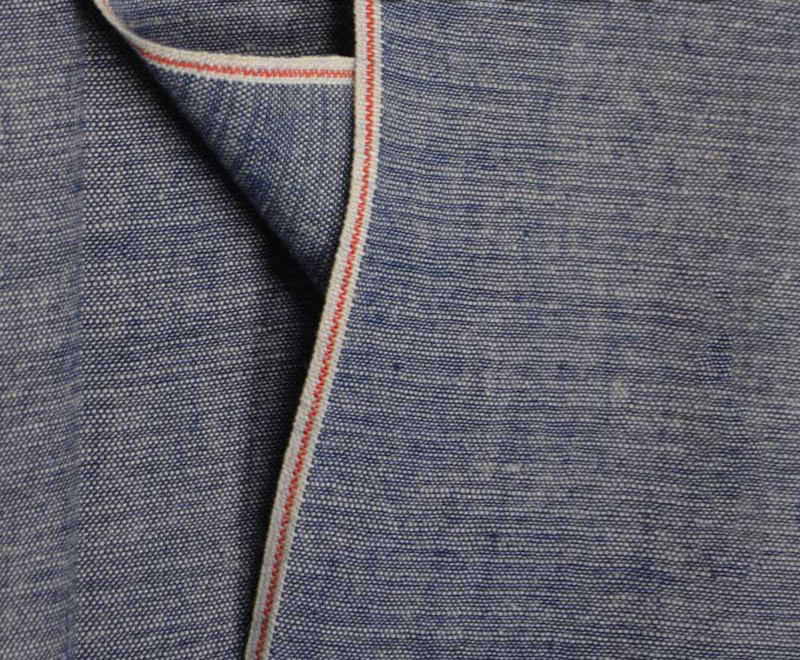Selvedge denim might feel very much like fashion jargon rather than a must-have unless you are a denim expert. Because you’re constantly bombarded with various fits, brands, washes, and fabrics, you might quickly lose it in menswear’s ever-expanding denim section. However, this should not be the case.
Denim is a durable fabric that has endured the passage of time. The self-finished denim outseam edges formed by historic shuttle looms are known as selvedge. It’s a name given to a higher-quality, more difficult-to-produce kind of denim customarily sold and worn unwashed.
As trends and fashion come and go, denim jeans continue to be a popular choice among individuals from various walks of life. Due to the apparent tradition of the weaving process and the dedication to excellence from the companies that opt to create it, selvedge weaving has regained popularity.
What Is Selvedge Denim?
Denim jeans, which were created as workwear for cattle ranchers, miners, gold prospectors, and other hard workers in the past, are today a staple in outfits all over the world.
It appears woven and durable without understanding anything about it, yet it frequently has a rough, worn-in appearance. The denim construction dates from the 1950s, a time when jeans were still considered workwear.
How Is Selvedge Denim Made?
There are different methods to produce denim, but as most of the denim connoisseurs will advise you, a quality pair of jeans means a couple made from selvedge denim.
It is woven in two ways: with and without the shuttle. The traditional method of weaving is with a shuttle.
A shuttle is necessary because it is responsible for threading the weft via a warp shed. The fabric’s edges are self-finished as the weft is continually passed back and forth; that’s why it’s referred to as “selvedge.” Without further processing, the manufacturers may integrate this intricately knit and robust edge in the outfit.
A projectile weaver is most typically used for shuttleless weaving. Rather than a shuttle, the manufacturers use a compact metal contraption that resembles a bullet, thus the name.
Weft insertion results in ragged ends on both sides of the material, which you must trim off before it is stitched into denim.
The procedure of hurling the shuttle back and forth takes a long time and causes a manufacturing speed barrier. Denim manufacturers utilize shuttleless weaving devices when they require to weave quicker and cheaper.
What Makes It Different from Jeans?
Selvedge denim degrades “better” than the non-selvedge jeans, according to industry insiders and denim heads. Shuttle looms have a lesser strain on the yarn because of their slower speed. That is why denim connoisseurs select it. However, it’s not considerably better in terms of longevity.
Raw denim is the unwashed jeans that fashionistas likely ought to break in and clean in a specific manner to maintain its quality and size. On the other hand, Selvedge jeans are tight fabric edging, which originates from the shuttle loom.
What Is the Best Way to Clean a Selvedge Denim Jacket?
They’re not intended to be washed frequently and when it happens, treat the jeans properly, without going overboard. If you clean them too regularly, the fades will stop, but you won’t feel or smell as good if you wait too long.
- Note that the higher the water temperature, the more the denim will shrink, so if you’re hesitant, go with a lukewarm water cycle, if not a cold-water cycle.
Recap: If you use warm water, wash, or soak the jeans and avoid detergents and commercial cleaning powder.
- Fill the bucket or bathtub halfway with water to completely submerge the clothing. The clothing will lose just a tiny quantity of indigo if washed in lukewarm water at about 30°C.
- Add a squirt of detergent to the water and avoid whitening and bleaching detergents. Turn your outfit inside out and soak it in water.
- To avoid excessive indigo loss, swirl your garment for a few minutes to ensure the soapy solution thoroughly permeates the fibers, and then let it soak for about 1 hour without agitating. If the clothing floats, keep it immersed with cans or other items.
- Remove all detergent residue by rinsing the clothing in cool water.
- Take the clothing from the dryer and hang it to dry on a clothes hanger.
The basic guideline is to maintain the jeans for longer before cleaning them. The longer it takes without bleeding the color in the laundry, the more dramatic and individualized the fades tend to be.
As a result, a go-to pair should be able to last six months, one year, or perhaps longer between deep cleans.
